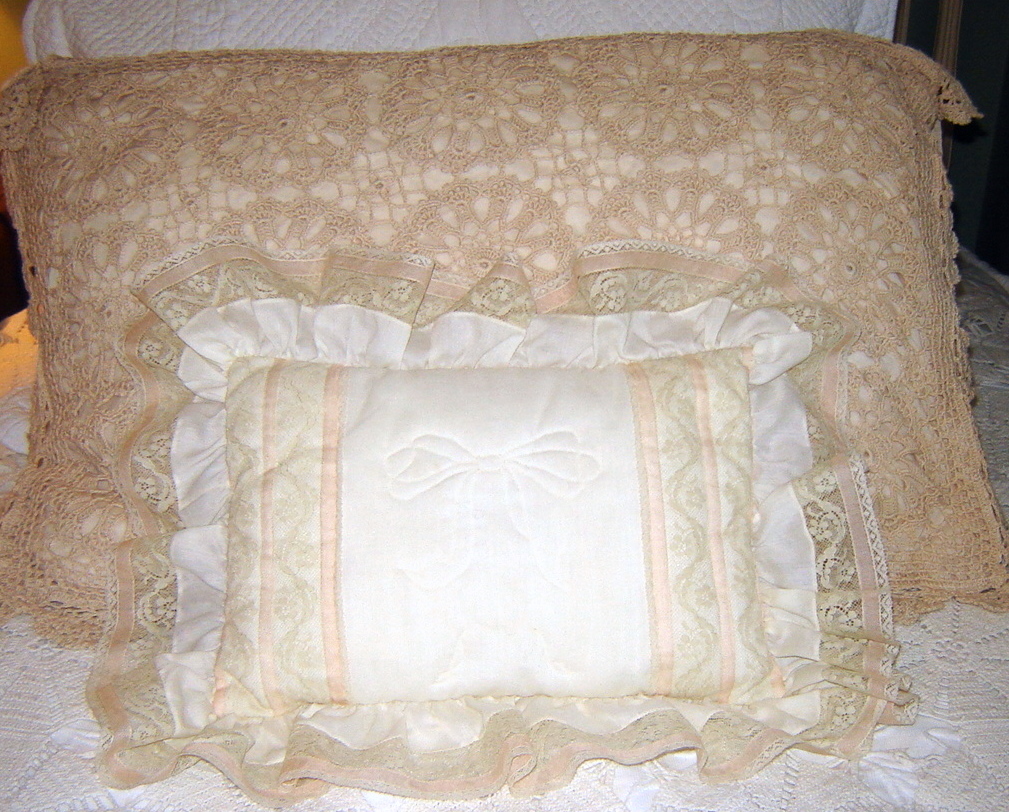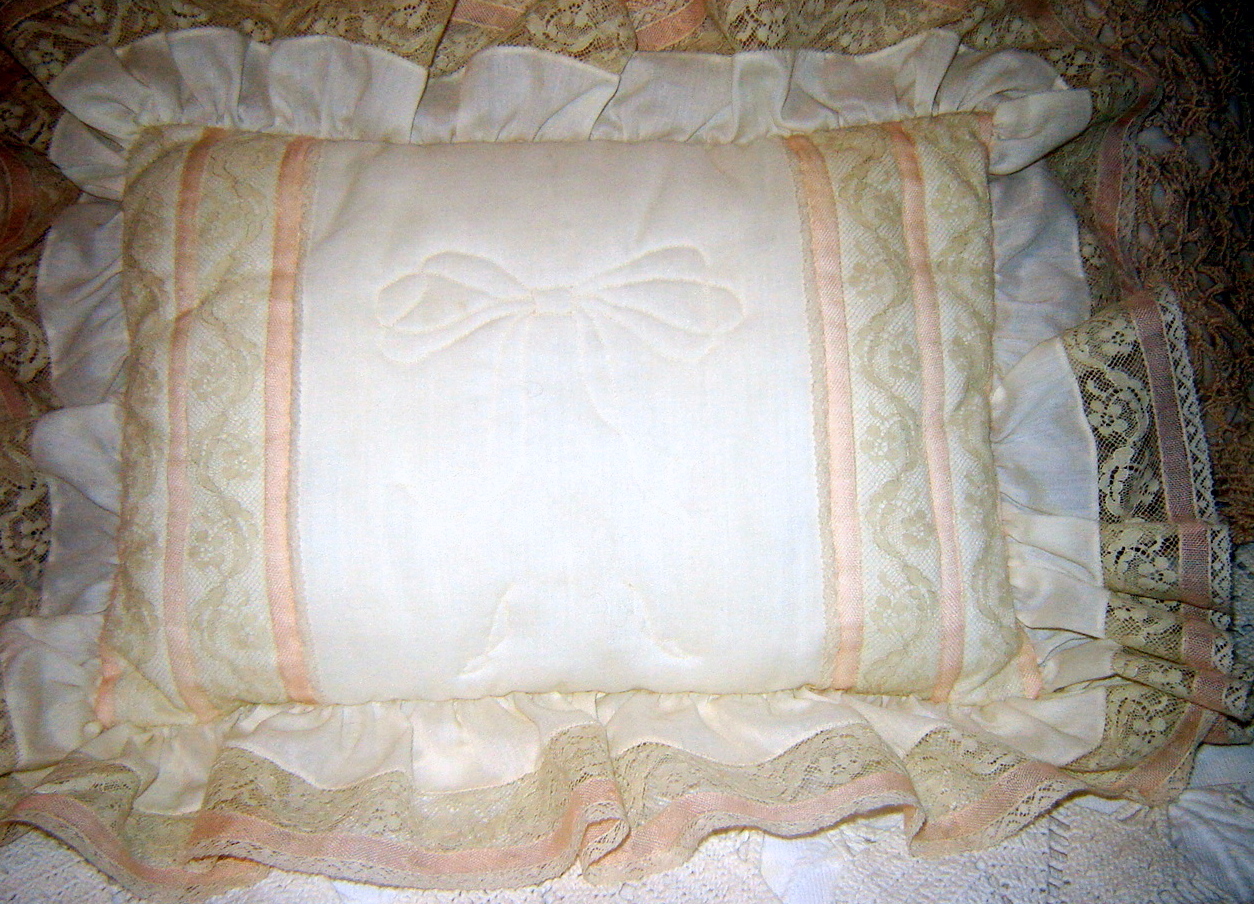A pillow is a great project for learning new techniques.  The use and actual quilting of heirloom lace combine two of my favorite sewing genres.  Adding free motion quilting and the use of lace tape to the project makes it an instructive and pretty little ornament.
Beginning with rice Imperial batiste, two rectangles were cut 14″ x 18″, two inches  larger than the intended finished pillow size of 12″ x 16″. A piece of lightweight batting was cut to the same measurement. The bow was traced onto one of the batiste rectangles using a fine tipped blue water soluble marker. The quilt “sandwich” was hand basted together, with the traced bow on top, then batting and finally the second batiste rectangle.
Next, two panels of lace tape, antique insertion and a small edging were created as shown in the photo, using the heirloom sewing technique of lace-to-lace.  Care was taken to mirror the lace pattern. The heirloom panels were pinned in place so that the edge of the first and last row of lace tape fell on the intended seam line on the sides of the pillow.
With fine monofilament thread, the panels were straight stitched to the quilt sandwich along each line of zig zag stitches that joined the pieces together, quilting the panels.  The scalloped edge of the lace closest to the bow was left free.
The bow was stitched free-motion, with the feed dogs lowered, and a piece of Stitch ‘N Ditch stabilizer placed under the center panel to prevent puckering as the bow was stitched. Those who have some experience with free motion quilting might be most satisfied with this stitching done with 80 wt. Madeira Cotona or another fine heirloom sewing thread. Others new to the technique will probably be most satisfied by using the fine monofilament thread.
A 2″ strip of rice batiste was used for the ruffle. To this strip was joined a row of lace insertion, lace tape and the narrow edging. The pillow was finished in the traditional manner, gathering and sewing the ruffle to the front, then seaming on a two piece back with two or three buttons to close it up.
If you have never used lace tape, you might want to try it. This versatile 100% cotton product can serve a number of functions, but most commonly as lace insertion. Its matte finish can add color to a project in a way that satin ribbon cannot. Among other uses, lace tape can be shaped and used for shadow applique’ (see post Lace Tape Doll Dress <dolls>, Liberty Goat Dress <smocking>  and Blossom Basket Blouse<clothing~ladies>). It is reasonably priced, comes in more than 20 colors and is available from Wendy Schoen.



